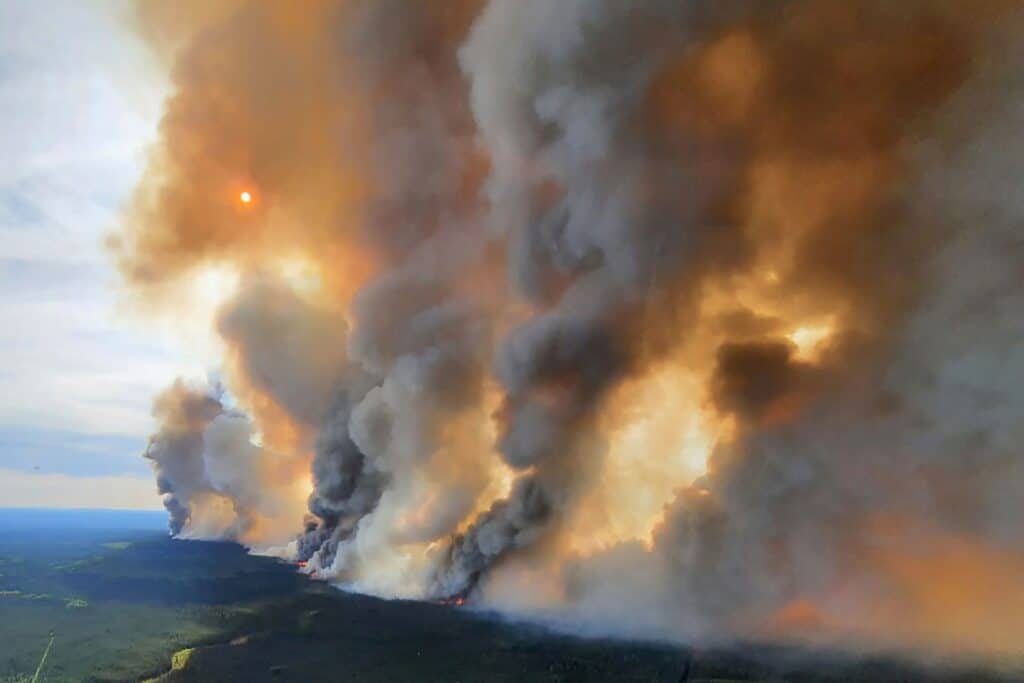
This article was originally published in Deseret News.
The worst wildfire in Texas history is making headlines across the globe right now. But from Washington, D.C., to Seattle, cities all over the U.S. are being clouded with wildfire smoke. Forests are burning, and that’s bad news for our lungs. A report released by First Street this month found that wildfires could increase Americans’ exposure to air pollution and undo much of the progress made on air quality over the past 50 years. And it’s only going to get worse if we don’t address the wildfire crisis.
Wildfires have become more frequent and severe in recent decades, and these trends threaten our environmental goals. Poor air quality days have increased by nearly 500% over the past two decades in the West, primarily due to the increasing occurrence of wildfires in the region. Additionally, wildfire emissions reached a record annual high in 2021 of nearly 2 billion tons of carbon dioxide released into the atmosphere, hindering our nation’s climate goals. This is 150% higher than the annual average over the past 20 years. Moreover, in 2020, emissions from wildfires in California erased 16 years of emissions reductions the state had achieved.
Climate change is a factor, and reducing emissions is important in the long run, but the poor health of our forests and the overgrowth of fuels is the driving factor of the wildfire crisis.
Fortunately, active forest restoration practices, such as prescribed burns and mechanical thinning, have been proven to reduce the severity and size of wildfires and present a tangible action we can take today to address this growing problem. These practices also contribute to the forest’s overall health by improving habitat, increasing the forest’s resilience to drought and climate change, and reducing the spread of invasive species and diseases. If we hope to mitigate the impact wildfires are having on our air quality and emissions, these practices to reduce the overgrowth of fuels in the forest must be widely adopted.
Unfortunately, government red tape stands in the way. It can take anywhere from three to seven years to advance prescribed burns and other forest treatments on federal land—from initiation through the environmental review process to actually beginning treatments on the ground. These unnecessary delays have contributed to a backlog of forest land larger than the state of California. As Christy Brigham, director of science at Sequoia and Kings Canyon National Parks, puts it, “Bureaucracy is slow. Wildfire is fast. And bureaucracy needs to get a hell of a lot faster if we want to persist and not lose everything we’ve got left.” Until we can address these regulatory barriers, out-of-control wildfires will continue to burn and pollute our air.
Moreover, recent regulatory efforts by the Environmental Protection Agency, intended to further restrict air pollution, will make it more difficult to conduct prescribed burns. Though prescribed burns do emit some smoke, they help avoid far worse air pollution brought on by wildfires. Considering places like Portland and Seattle expect to see two extra weeks of poor air quality per year because of wildfires, the EPA should find ways to promote the responsible use of prescribed burns to prevent the massive amounts of smoke from wildfires and ultimately improve air quality.
It is widely understood that forest restoration work is pivotal in managing the severity of wildfires. The challenge now is overcoming barriers and leveraging partnerships to get that work completed on the ground. Streamlining the environmental review process through tools like categorical exclusions, improving the consultation process, limiting disruptive litigation, and excluding prescribed burns from state emissions calculations will help get more forest restoration projects implemented. Expanding workforce capacity through partnerships with states, counties, tribes, and private partnerships will also help get more needed work done.
Wildfires are now one of the greatest threats to providing clean air to Americans across the country, especially in the West. To maintain the progress made over the past half-century on air quality, we must reduce regulation, expand capacity, and solve the wildfire crisis.




